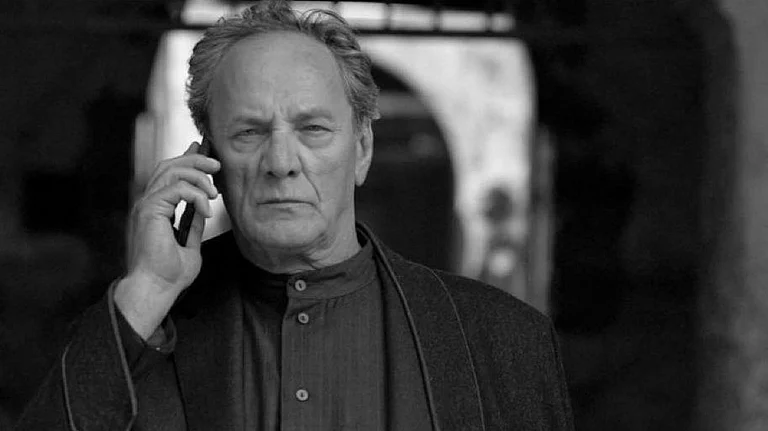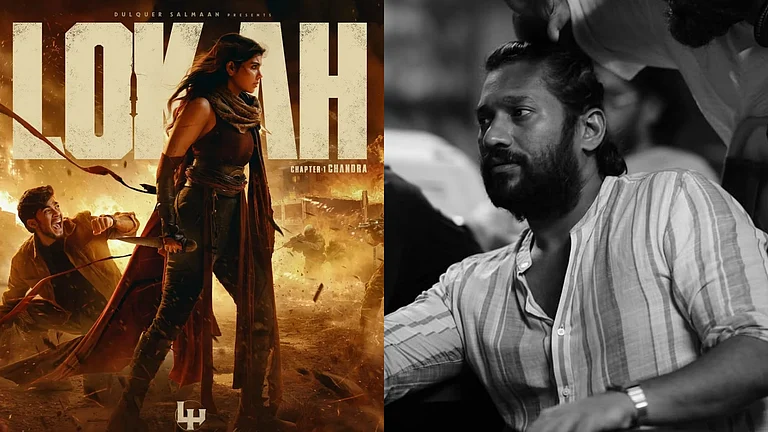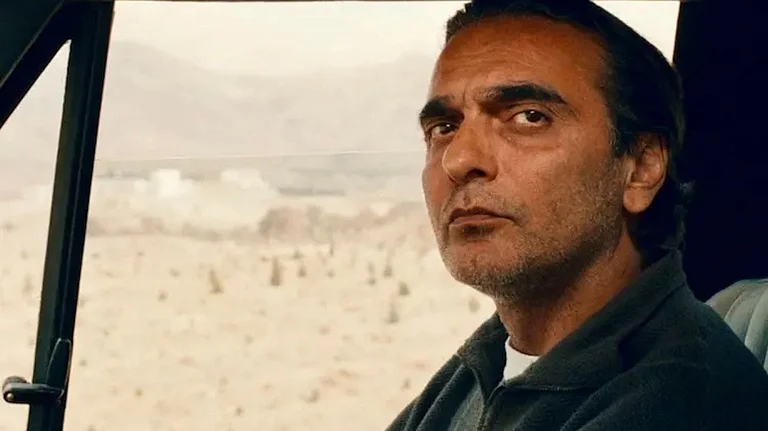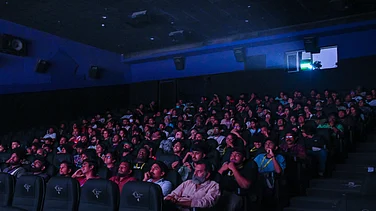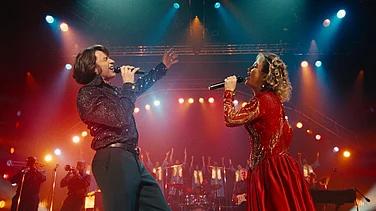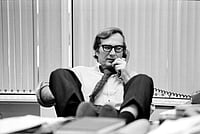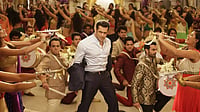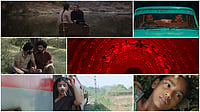In an indelible scene from Abbas Kiarostami’s Taste of Cherry (1997), an elderly taxidermist tries to dissuade the protagonist, Badii (Homayoun Ershadi), from suicide. He asks if Badii no longer wants to see sunsets and full moons, or wash his face in rivers. Has he lost all hope?
Right till his posthumous film, the arresting, enigmatic 24 Frames (2017), the Iranian master proved he was still very much enraptured with the world and the graces of everyday life, as long as we are patient to look. The signage we’re acquainted with in his cinema—the wind, crows and windows—spoke to his zest. From his celebrated Koker trilogy to Close-Up (1990) and Shirin (2008), he has always enmeshed artifice and art, making the boundaries porous and delightfully opaque. Performance isn’t located as some externalised thing that’s thrust on a situation; rather, the director puts it in a realist mode. Fiction and documentary dance together. Kiarostami’s cinema is one of spare gestures, distilled to their barest for revealing peculiar human vagaries. There’s no showy camera movement or elaborate lighting. The viewer has to scratch through various layers of concealment.
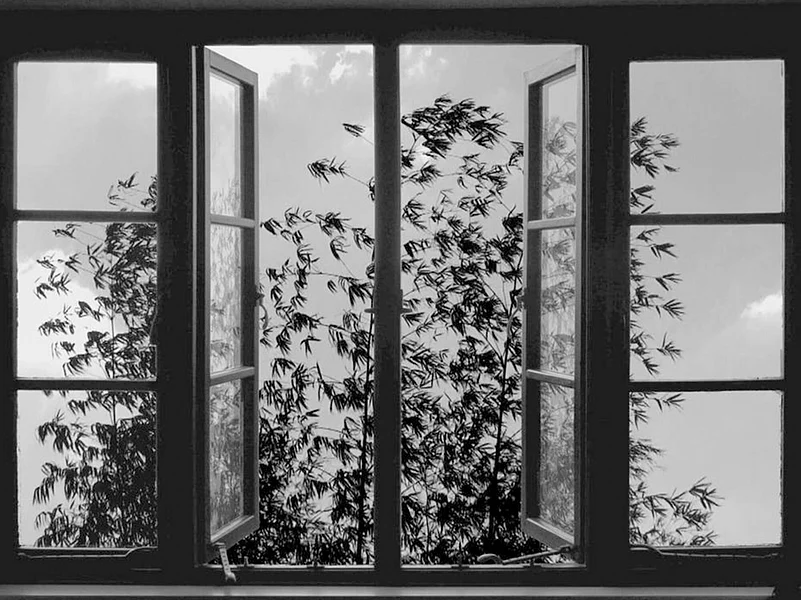
Perhaps it’s Shirin with which 24 Frames shares a kindred spirit. In the former, a hundred noted Iranian actresses’ faces in close-up—as they watch an adaptation of a 12th century Persian poem—form the fulcrum of its shared humanity cutting across time. Many might regard both Shirin and 24 Frames as aesthetic and thought experiments at best—gallery installations to be admired from afar than compact experiences.

Though we might wish to map the latter alongside his larger corpus and spot shared motifs, the director suggests treating it as a fresh slate. Throughout the five decades he worked as a director, his influence never waned. His voice only grew stronger as he flitted across formal re-flowering. At least, Shirin has an interruption in the presence of a French star like Juliette Binoche. In 24 Frames, Kiarostami invites us to inhabit the space between stillness and movement. There’s an appeal here to fill the seeming void with our own emotional projection. Here are no actors mediating our emotional access to images. Airy and elusive, the film isn’t just a rejection of narrative, but an emphasis of appreciating a specific rhythm of life we’re forgetting to bask in. Great artists render anew ties between the world, the individual and community. What Kiarostami does here is pull up almost sacred visions of the world. In exquisite monochrome widescreen, he seems to be asking: can beauty prop up a vision as its absolute basis?
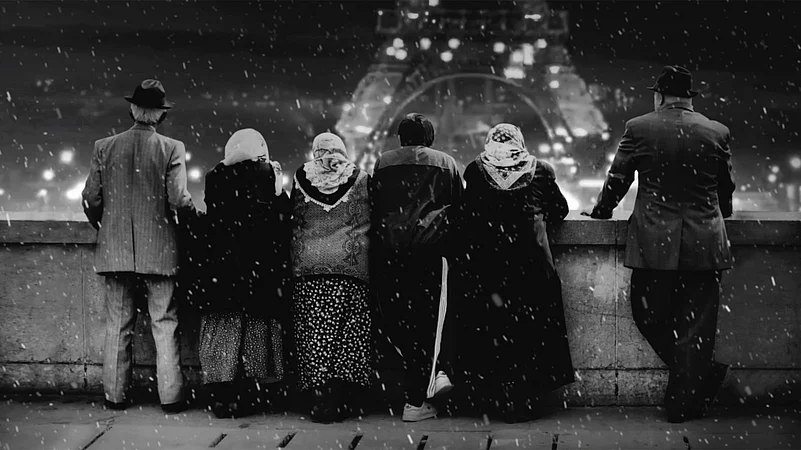
In his earlier works, characters spoke a lot, but also kept parts of themselves out of reach. In both Taste of Cherry and The Wind Will Carry Us (1999), there are unforeseen encounters and anecdotes spilled by strangers. Fleetingly, we get glimpses into their lives but no backstories. A distance is maintained, as are intrigue and possibility. Kiarostami approaches situations obliquely. The wait for an old woman’s death supplies meandering scenes.
What carries over into 24 Frames is the director’s usual absorption in vast landscapes. Suffused with radical mystery, it trusts us to affix meaning to the formally vague. There’s openness and pure freedom here—one that stems from an artist who no longer has anything to prove. It’s also the mark of a filmmaker who refuses to clutch onto any calcified style. Kiarostami seeks to push at the edges of cinema itself, stretching the limits of what it can entail. The film’s opening epigraph wonders about the ‘before’ and ‘after’ of a frame. He says right off the cuff that the film is about paintings and photographs that have inspired him. What he imagines is a full-bodied life for each frame.
Originally, Kiarostami wanted to animate a bunch of iconic paintings by Picasso, Bruegel and others with a spattering of CGI. Ultimately, he abandoned that approach and dug into his own mass of still images. Then, he spun them into motion vignettes. Aided by digital technology, the reanimation is by turns imperceptible and occasionally jarring.
Widening an image beyond a fixity, 24 Frames becomes an invitation to breathe, wander, reflect. In an age that’s all about rapid bombardment of fast-trotting scenes and kinetic rhythm, 24 Frames stands at a defiant distance. Kiarostami has no inclination to join the mob. Time slows down ever so luxuriously. The way of looking at the world is gentler. As much as our eyes dart across the expanse of a frame, yearning for mobility, the director silently impedes all such impulses. He asks us to wait as these images open up and come alive. Infusing life and vitality into them, he puts the frames in a sense of continuum. They are invested with a trajectory.
We move from one wordless tableaux to the next. Kiarostami’s well-known nature photography hinges a lot on animals—dogs sneaking from behind a tree, horses clashing, crows stealing across a vista, cows in repose, seagulls diving, lions trying to mate, deer strutting through a mottled patchwork of trees. There are coastlines and woodlands. Drifting snowflakes cast a spell over each setting. Some of it is repetitive and does grate. But hold on.
The lull Kiarostami creates has a slow, immersive effect. A dreamy reveal triggers a shift in perspective. Often used as a framing device, a windowpane lowers to show a site of violence. Animals sleep, gesture towards intimacy but the director’s witnessing self remains a ghostly presence. We’re asked to take in the frames on their aesthetic value. Nevertheless, their constructed-ness is also a part of the deal.
24 Frames grips especially when the design becomes wholly invisible. We lose ourselves in its overwhelming beauty. The few times humans fill the frame, it turns transcendent. In one, immigrants—their backs turned to us—watch the Eiffel Tower, as day turns to night and the street breaks out in revelry. Snow falls like a prayer. As the film wraps, a girl is sleeping while an old film plays on a computer. In it, the woman and man kiss, she singing softly about love prevailing. 24 Frames coheres moments like this into a soul-lifting experience. Among cinema’s greatest humanists, Abbas Kiarostami was capable of enchantment till his final film.








